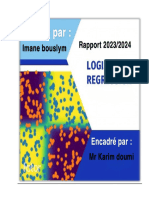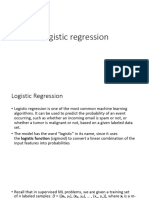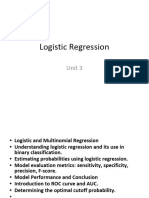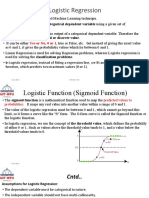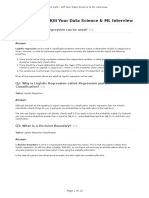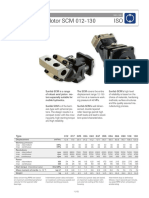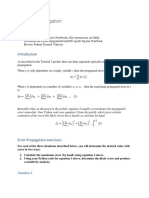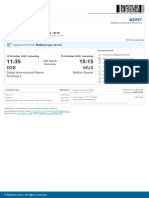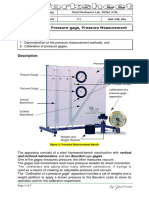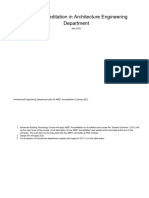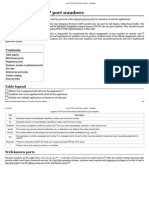0% found this document useful (0 votes)
35 views4 pages11logistic Regression in Machine Learning - GeeksforGeeks
Logistic Regression is a supervised machine learning algorithm used for binary classification, predicting the probability of an input belonging to a specific class using a sigmoid function. It can be categorized into binomial, multinomial, and ordinal types based on the nature of the dependent variable, and relies on several assumptions including independent observations and a linear relationship between independent variables and log odds. The model utilizes a likelihood function to estimate coefficients and applies the sigmoid function to transform continuous values into probabilities between 0 and 1.
Uploaded by
shubhrajkumar707Copyright
© © All Rights Reserved
We take content rights seriously. If you suspect this is your content, claim it here.
Available Formats
Download as PDF, TXT or read online on Scribd
0% found this document useful (0 votes)
35 views4 pages11logistic Regression in Machine Learning - GeeksforGeeks
Logistic Regression is a supervised machine learning algorithm used for binary classification, predicting the probability of an input belonging to a specific class using a sigmoid function. It can be categorized into binomial, multinomial, and ordinal types based on the nature of the dependent variable, and relies on several assumptions including independent observations and a linear relationship between independent variables and log odds. The model utilizes a likelihood function to estimate coefficients and applies the sigmoid function to transform continuous values into probabilities between 0 and 1.
Uploaded by
shubhrajkumar707Copyright
© © All Rights Reserved
We take content rights seriously. If you suspect this is your content, claim it here.
Available Formats
Download as PDF, TXT or read online on Scribd
/ 4


